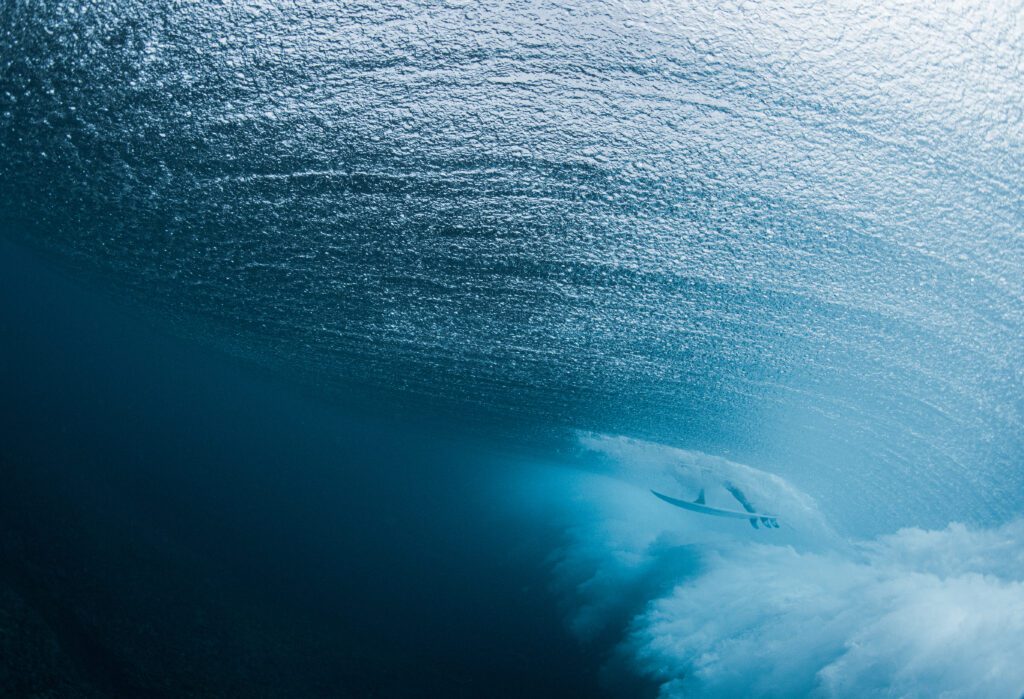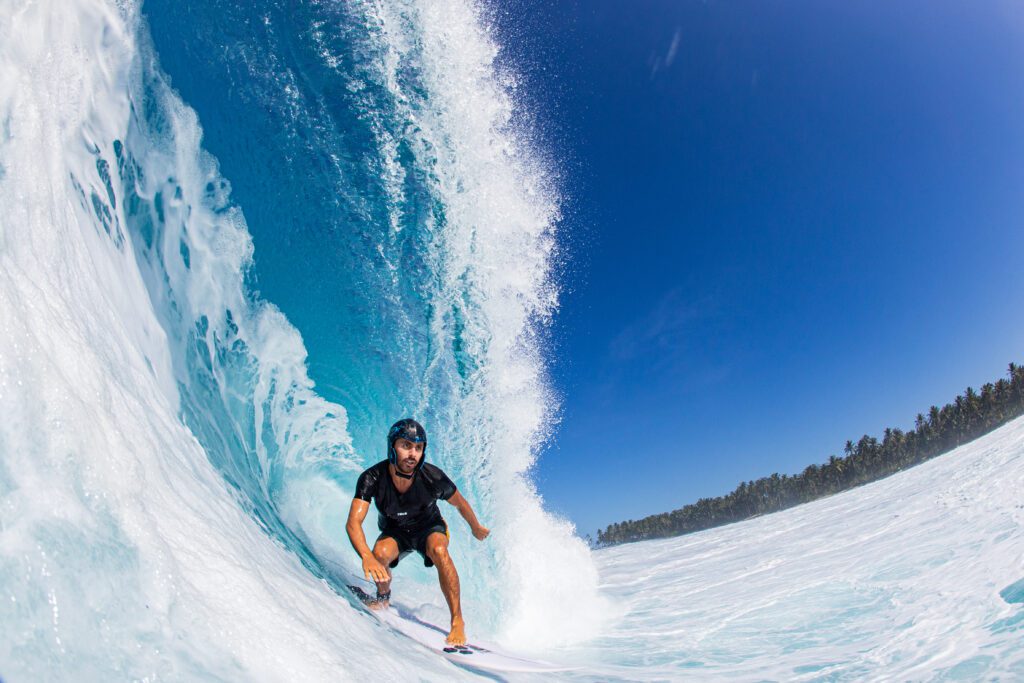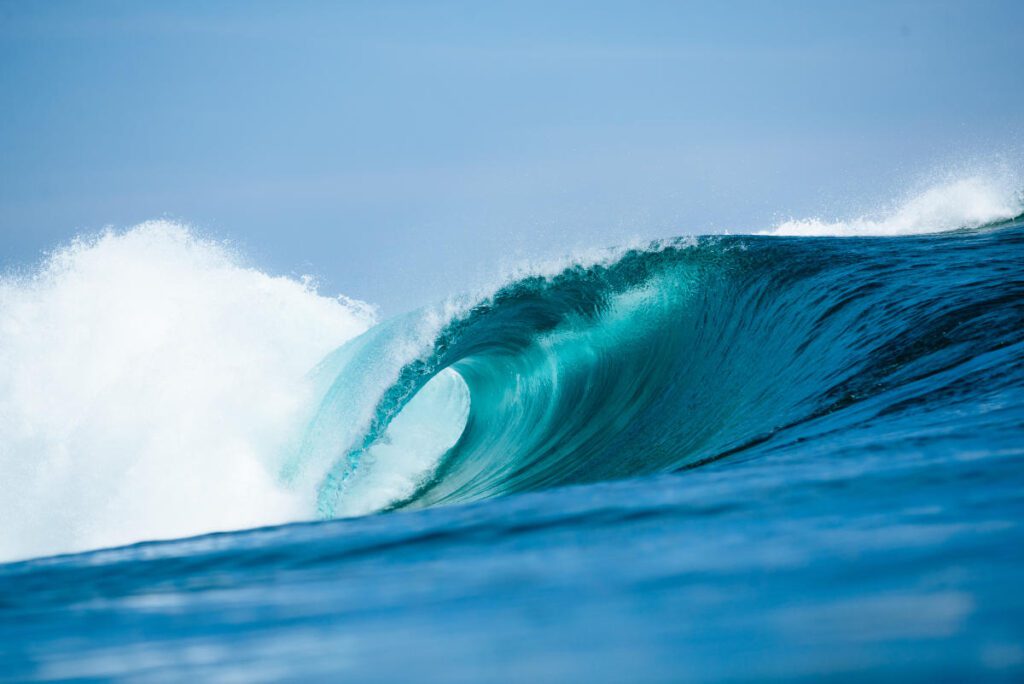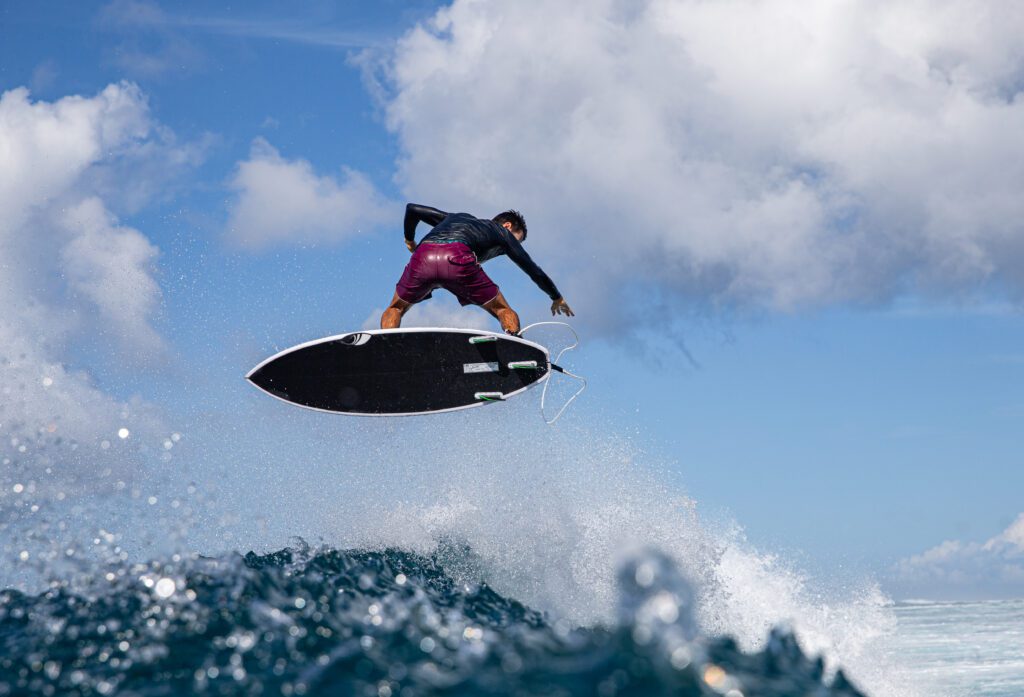Who Makes The Best Boards In Indonesia?
Pyzel, Lost, Channel Islands, and Sharp Eye put to the test.
“Am I really gonna pay that much for a Bali board?”
The year was 2015, it was my first time to Indonesia, and I’d managed to arrive just in time — albeit wholly unprepared — for the infamous “Century Swell”.
You know the one. Craig. Kandui. The shoulder-hop that sold 10,000 Hyptos.
Ah, memories.
Lombok was my chosen destination to meet the swell. The only question was: how I would fare at oversized Deserts on my biggest board — a chippy 5’10 Rusty Blackbird?
According to friends who’d been there, it wasn’t possible. Not at this size. The terms “20-foot”, “freight train”, and “near-certain death” were used with frightening regularity. So before hopping on that midnight ferry, I decided to look at some bigger boards for sale in Bali.
As a broke college student, $8,000,000 Indonesian Rupiah seemed like a helluva lot of money to drop on a new board, even with the 0.000069 exchange rate (~$550 USD). And from what I’d heard about the quality of boards produced in Indo (nothing good), my conviction wavered.
“Am I really gonna pay that much for a Bali board?”
In the end, I did not.

Instead, I rented a 15-year-old 6’3 Simon Anderson from a local warung, complete with plastic FCS1s and a crudely repaired buckle. The board was $10 a day to rent, meaning my three-day trip to Deserts would cost just $30.
A banger deal.
Worst money I ever spent.
We ended up scoring Deserts as good, and big, as it gets with very few people out. During one surreal hour, it was literally just my college friend Ambrose and me out the back, screaming like children, trying to decide which of the endless 10-foot, 20-wave sets we should swing on.
Yet every single wave I caught, the Simon flexed like plexiglass and its fins whistled incessantly. Not once did I feel in control, nor did I make a single memorable tube.
This was a session that I’ll never forget, and the memories are mostly positive. But I can’t help imagining how much better that experience would have been if I’d just bitten the bullet and bought a proper step-up from one of the Balinese manufacturers — especially knowing what I know now.
Last year, I returned to Indo for the first time since 2015. A lot of things have changed since then.
1. Indo got way more crowded, then significantly less crowded. Now that we’re past the pandemic, it’s pretty crowded again.
2. As a result of the increased tourism, Indonesian board-building has expanded in depth, breadth, and quality.
3. I now have a job that pays me actual money, meaning I can afford to buy a new surfboard for a trip without facing an economic crisis.
Ironically, the nature of my job also means I don’t have to pay for surfboards. Which is why, before leaving for Indo last year, I decided to hit up some of the local board builders and put that old “Bali board theory” to the test — sans financial risk.

After a bit of research and negotiation, the four brands I landed on were Lost, Pyzel, Channel Islands, and Sharp Eye — all boards I’ve tested from their US factories and generally enjoyed.
The idea was to have each brand make me two boards (a shorty and a step-up) at their Indonesian factories. I’d then test them all throughout my stay at Kandui Resort, and in the end, I’d declare one as the best two-board Indonesian quiver.
Not to spoil anything, but the boards all impressed me beyond belief. While there was a clear winner in terms of performance, all the boards were made with premium materials and craftsmanship. In fact, only one of the boards broke during my three-week stint at one of the most wave-rich regions in the world.
And here’s the real kicker: if you live in the US or Australia, you may already be riding a Bali board, and you don’t even know it.
Read on.
Channel Islands & Sharp Eye, via Onboard Store Bali
Factory location: Kerobokan, near Kuta, Bali
Total shapers: 3 (all Australian)
Total factory employees: 50 (mostly Indonesian)
Stock board price: $850 AUD ($600 USD)
Sold: online, or at their retail stores in Seminyak, Canggu, Padang Padang
Materials from: Australia and the US, depending on prices and availability
Exports boards to: Australia
Local talent: Rio Waida, Ryuki Waida, Kian Martin
Background:
“‘It’s never gonna be good. You’ll never have the right materials.’ — That’s what people told us before we decided to move part of our operation over to Indo,” explained Charlie Stambolieff, marketing and sales manager for Onboard Store Bali.
“As if.”
Like Euroglass, Onboard Store is a licensee business that builds boards for established surf brands in their (mostly) non-native regions.
For instance, in Australia (where OBS was founded), renowned companies like Channel Islands, T&C, Tokoro, and more provide Onboard with their shaping files and logos. Onboard then produces and sells/distributes the boards across greater Antipodea, granting these American brands exposure to international markets.
This works well for the board companies, who don’t have to spend extensive time/money setting up production/distribution centers around the world, and Onboard, who have the infrastructure, workforce, and local distribution channels already established in these areas, to both make money using their respective skills and brand equity.
Essentially: A file is sent, a board is made and sold, both companies take a clip of the profits, everybody wins — even the environment (no overseas shipping required).
Globalization at its finest.
Back in the early 2010s, after recognizing how big the surfboard market was in Bali, a few Bintang-and-barrel-fueled Aussies convinced the Onboard execs to let them open up a new operation in Indo. Established by Chris McHutchinson and Mike Rommelse, the Kuta-based company has been thriving since its inception, to the point that they’re now opening a second factory to support the local demand for surfboards.
“The trick was getting the right materials to create world-class boards,” Charlie explained. “It took some time, but now that we have our supply chain sorted, we’re really confident in our ability to make boards as good or better than the ones you’ll find in the US or Oz — especially for the waves around here.”
Onboard Indo has licensee deals with Channel Islands, Sharp Eye, and Chris Christenson. That means all the boards that Rio Waida has been riding have come out of the Onboard Indo factory. Throughout the pandemic, Onboard Indo also built and shipped boards over to Australia to keep up with demand — so if you bought a CI recently anywhere between the Goldy and Perth, it’s possible that board was made in Bali.
“Everyone who works at Onboard surfs…and surfs well,” Charlie said. “We all care about the boards and test them regularly, trying to find better blanks, resins, and so on.”
Onboard also integrates local Indonesians into (almost) every part of board-building.
“The local Balinese are amazing with their hands,” Charlie explained. “The stuff they make is incredible. We have them do a lot of our glassing, sanding, and artwork currently, but the long-term goal is to get them shaping as well.”
After building the boards, Onboard sells the majority of them at any of its four locations in Bali — two in Canggu, one in Seminyak, and one on the Bukit Peninsula, right by Padang Padang.
They also deliver boards directly to surf camps, like Kandui Resort, should you want a new board waiting for you upon arrival.
Lost Indo
Factory location: East coast Bali
Total shapers: 2
Total factory employees: 20
Stock board price: $8,100,000 IDR ($560 USD)
Sold: Online, also in Uluwatu (White Monkey), Kuta (Rip Curl), and most other surf shops around Bali
Materials from: They build their own blanks in Indo, resins from Singapore
Exports boards to: USA
Local talent: Dylan Willcoxen, Kalani Johnson
Background:
“Am I paying too much for a Bali board? Is it international quality?’ I hear these questions all the time. And the answers are no and yes, respectively.”
That’s Pete Matthews, the guy who handles the production, sales, and distribution of Lost Indo surfboards, among a thousand other things on the Island of the Gods.
Having opened Waialua’s Third Stone factory back in 1991, Pete has an intimate knowledge of surfboard building. As he started spending more time in Bali, Pete grew tired of paying Bali’s infamous (if finally dissolved) “more-than-three-board” entry fee.
“We realized that importing surfboards to Bali doesn’t work, because there’s a high ‘luxury tax’ — it’s like 30-40%,” Pete explained. “But if you imported the raw materials, you could do it for cheap.”
So Pete, along with a man named Basti (who you’ll meet later on), figured out a way to get blanks, resins, and the like into Bali, then started building boards for themselves and their friends.
The demand for their product quickly grew.
While Basti handled most of the board-building, Pete used his surf industry channels and influence to get globally acclaimed shapers over to Bali. Offering plane tickets, luxury rooms on top of Uluwatu, and the postcard Balinese surf experience as an incentive, Pete was able to draw major designers from all around the world — DHD, Tokoro, and so on — to his little island paradise.
One of the first shapers to take up Pete’s offer was Lost’s Matt Biolos, who apparently loved what he saw. He’s returned every year since.
“Of all the brands we brought over here, Matt Biolos comes to Bali more than anyone — usually doing 2 to 3 trips a year,” Pete explained.
While Pete originally worked with many of the major surfboard labels in Bali, his close relationship with Matt has led to them breaking away from Basti’s operation and starting their own board-building factory on Bali’s east coast. Setting himself apart even further, Pete and his partners now build their own blanks domestically, which are used in all the Lost Indo boards.
“This means we don’t have to waste any foam, and the boards are as strong as can be,” Pete explained. “If you want to make a 6’0 but you only have a 6’6 blank, you have to cut so much deeper into the foam, which makes the boards a lot softer. All of our blanks are made to order, which means if you want a 6’0, it’s being cut out of a 6’1 blank. This makes the board’s foundation as strong as can be.”
But it doesn’t stop there. Lost Indo is exceptionally hands-on in every part of the build-building process.
“For every custom board in Bali, the file is designed personally by Matt, and then he gives them to us to shape,” Pete said.
While Matt continues to work directly with his Indonesian licensee, he also puts great faith in their abilities. Over the past couple years, countless ‘Bali Built’ boards have landed on US shores to be sold to Lost’s domestic market. However, the majority of the boards are sold in surf shops around Bali, most notably White Monkey on the Bukit and the Rip Curl store in Kuta.
As far as investing in local talent, Lost has gone all-in on Kandui Resort resident ‘All Day’ Dylan Willcoxen, perhaps the most barreled 12-year-old who’s ever existed.
“After meeting him last year, Matt put Dylan straight onto Lost’s International team, meaning all of Dylan’s boards come out of the US budget,” Pete explained. “This year, we’re gonna bring Dylan out to California during the US championship at Lowers, where he’ll be staying with the Biolos family and being looked after by Cory Lopez.”
Having witnessed Dylan’s magic firsthand, I can vouch for Lost that this is a worthy investment.
Pyzel Indo
Factory location: Bukit Peninsula, Bali
Total shapers: 2 shapers (both American)
Total factory employees: 18
Stock board price: $620 USD
Sold: In most surf shops around Bali
Materials from: Australia
Exports boards to: Indo only
Local talent: Bronson Meydi
Background:
“Everyone said it’s impossible to make boards here. As we can see now, it ain’t.”
That’s Basti, a German-born surfer who moved to Indonesia in the early 2000s in search of a tropical climate and peeling lefthanders. He found them, in abundance, on Bali’s Bukit Peninsula.

“After I moved here, we started building boards out of necessity,” Basti explained, referencing Indo’s debilitating import tax on ‘luxury items’.
“I had a background in building snowboards,” he continued, “so I figured making a surfboard couldn’t be that hard. Boy was I wrong. I quickly learned that a board is only as good as its weakest component, but if you start with a bad shape, it’s gonna suck.”
After some initial growing pains, Basti found there was a rabid demand for his product — people in Bali wanted surfboards, and they wanted them now. This market allowed Basti to expand his factory and bring in more brands on a licensee basis. Today he creates boards for DHD, Timmy Patterson, and of course Pyzel.
“Jon [Pyzel] has made his intentions very clear,” Basti said. “He wants to make boards where people surf. To be a counterweight for places like China and Taiwan. I really back that.”
Considering Pyzel has trusted people building his boards in Australia, (continental) Europe, Peru, the UK, Japan, Brazil, South Africa, Costa Rica, Indonesia, California, and Hawaii, this point is overwhelmingly valid.
Basti’s operation has two full-time shapers (both American), one main glasser (Australian), and a list of locals who help with just about everything else.
“We have every religion covered in our factory,” Basti explained. “Back when I had only Balinese working for me, we’d have days or weeks where no one showed up to the factory due to certain holidays. Now someone at least shows up every day [laughs].”
Despite the regular help, Basti prefers to keep his operation smaller and domestic.
“I didn’t come to Indo to run a huge factory,” Basti said. “I came here to surf.”
That’s why his factory has been, and will always be, right there on the Bukit. A stone’s throw from his beloved lefthanders. But that’s not to say the boards don’t work elsewhere.
In fact, you’ve probably seen Pyzel Indo boards all over your IG feed, specifically under the feet of Bronson Meydi, the country’s best natural talent. While freaks like Bronson would make any board look good, it’s worth noting that Jon Pyzel trusts his Indo team enough to make boards for JJF when he visits Bali for CT events.
And for what it’s worth, the Pyzels were my personal favorite boards of the Indo-made bunch. That’s why they’re getting their own bespoke Joyride review, featuring the best day of surfing in my life, coming soon.

How to win your own Indonesian-made surfboard
Competition over!
The prompt was to submit your best haiku about that new board feeling. We had some great submissions, and we’ve determined our winners. They include:
Holden Trnka (23, San Francisco, USA)
my mind on the edge
the tradewinds softly blow
i hope i don’t bog
Sam Benzie (33, Geraldon, West Oz)
Cant beat a new board
Unless it surfs like shit
Or I just surf shit
Scarlett Rennie (9, Phillip Island, Aus)
new board fresh and fast
I feel powerful and free
surfing I am me



 Apr 26, 2024
Apr 26, 2024
